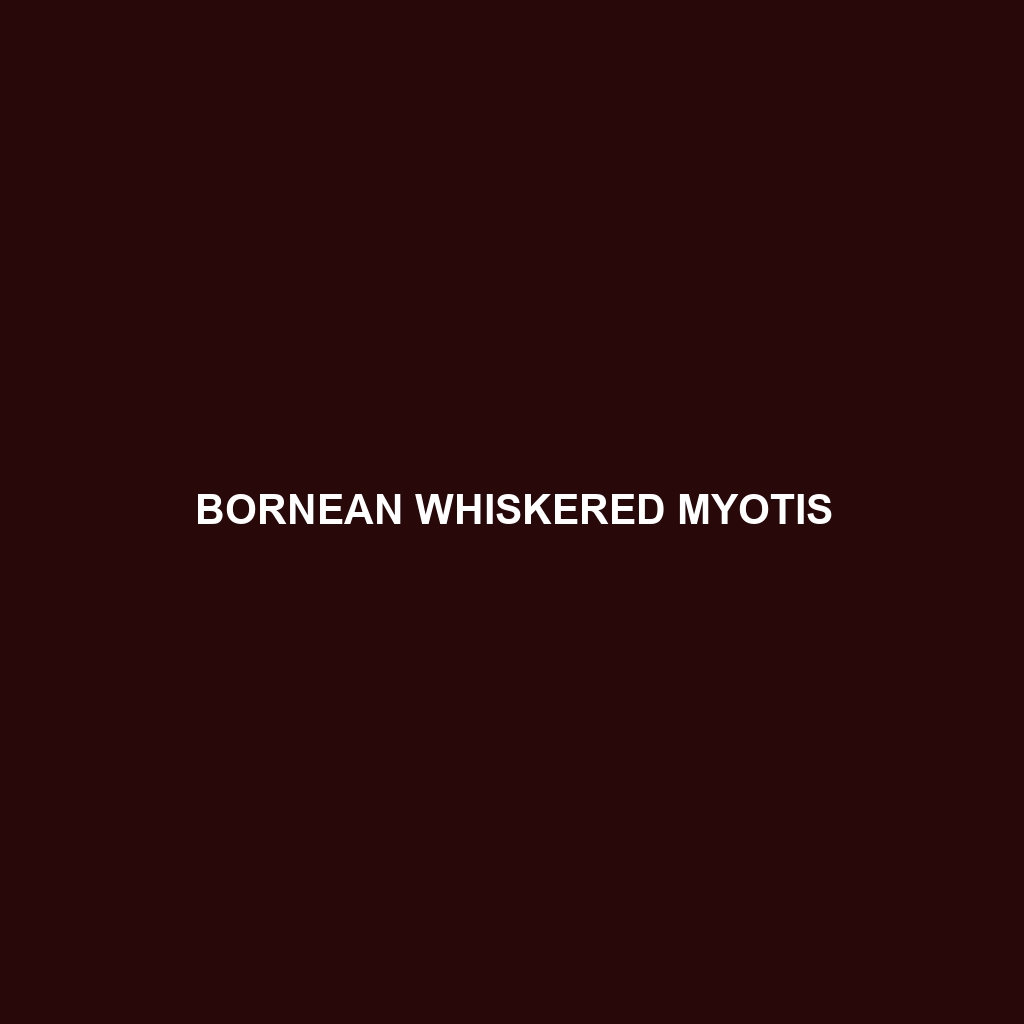Bornean Whiskered Myotis: A Comprehensive Species Description
Common Name: Bornean Whiskered Myotis
Scientific Name:
Habitat
The Bornean Whiskered Myotis is primarily found in the lush rainforests of Borneo, a tropical island in Southeast Asia. This species thrives in various habitats, including lowland forests, mangroves, and occasionally, secondary forests. Preferring humid environments, these bats often roost in tree hollows or under the eaves of buildings, taking advantage of the dense vegetation that offers ample shelter.
Physical Characteristics
The Bornean Whiskered Myotis is relatively small, measuring about 7 to 10 centimeters in body length, with a wingspan of approximately 25 to 30 centimeters. Its fur is typically brown or gray, featuring lighter underparts and a distinctive whisker-like fur adornment around the face, giving it its name. The bat’s ears are rounded and prominent, enhancing its acute sense of hearing, essential for its echolocation abilities.
Behavior
This species is nocturnal, becoming active during the night for foraging and socializing. The Bornean Whiskered Myotis is known for its agile flight, often seen hunting insects in various aerial maneuvers. They roost communally, providing a social structure that helps with both warmth and protection from predators. During the day, they often remain hidden, taking shelter in their preferred habitats.
Diet
The diet of the Bornean Whiskered Myotis primarily consists of insects, including moths, beetles, and flies. They are adept at catching their prey mid-air, utilizing echolocation to track and locate food sources during their nightly foraging. This diet plays a crucial role in controlling insect populations within their habitat, highlighting the species’ ecological importance.
Reproduction
Bornean Whiskered Myotis typically breeds once a year, with the breeding season occurring between late spring and early summer. Females usually give birth to a single pup, which relies heavily on its mother for the first several weeks of life. The mother’s care includes nursing and teaching the pup essential survival skills, such as hunting and roosting.
Conservation Status
Currently, the Bornean Whiskered Myotis is classified as vulnerable due to habitat loss from deforestation and land development in Borneo. Conservation efforts are crucial to protect this species and its natural habitat, as continued environmental degradation poses a significant threat to their survival.
Interesting Facts
One fascinating fact about the Bornean Whiskered Myotis is its unique ability to echolocate with precision, allowing it to navigate through the dense canopies of Borneo’s forests. Additionally, little is known about their social behaviors, making them an intriguing subject for ongoing research in the field of bat biology.
Role in Ecosystem
The Bornean Whiskered Myotis plays a vital role in its ecosystem by helping to maintain insect populations. As a natural predator of various insects, its feeding habits contribute to the balance of ecosystems within its habitat. Furthermore, their droppings serve as a natural fertilizer, enriching the soil and supporting plant growth, illustrating their importance in the biodiversity of Borneo.
